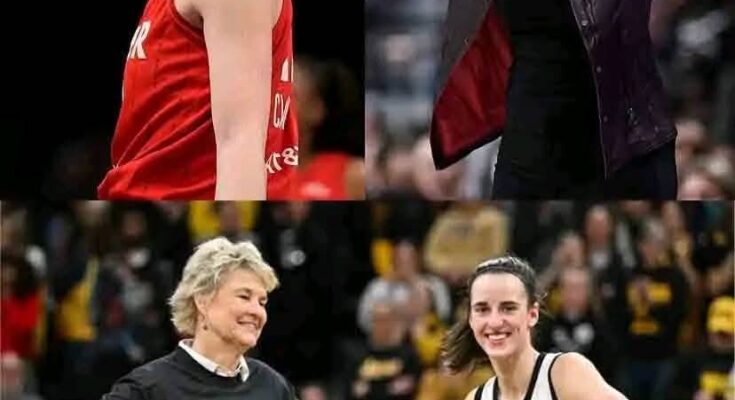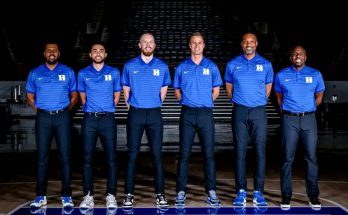From College Stardom to Professional Frustration: A Tactical Examination of Caitlin Clark’s Transition and Coaching Challenges in the WNBA
Caitlin Clark’s journey from collegiate dominance at the University of Iowa to her rookie campaign in the WNBA has been one of the most watched and debated storylines in women’s basketball history. Her dazzling scoring ability, deep shooting range, and uncanny vision captivated the nation throughout her college career. Yet, her transition into the professional ranks with the Indiana Fever has been far more turbulent than many anticipated. While fans, analysts, and pundits point to various reasons for the struggles—physicality of the league, team construction, or even media pressure—there is an increasingly persistent narrative gaining traction: Clark’s WNBA coaching staff, particularly at the Indiana Fever, has fundamentally failed to understand the pace, system, and structure that would best utilize her skillset.
This essay contends that the disconnect between Clark’s potential and her early professional results stems in large part from a coaching philosophy and tactical setup that is incompatible with her game. Her college coach, Lisa Bluder, crafted an offensive system at Iowa that was built specifically to amplify Clark’s strengths: quick pace, space, and decision-making freedom. Conversely, the Fever’s current coaching approach—deliberate, rigid, and lacking tempo—undermines the advantages that made Clark one of the most transcendent college players of all time.
At Iowa, Caitlin Clark wasn’t just a prolific scorer—she was the engine of one of the most efficient offenses in college basketball history. Head Coach Lisa Bluder understood that Clark’s value went beyond statistics; her gravity as a shooter, court vision, and instincts required an offense that kept defenses off balance.
Bluder ran a system that thrived on:
- Quick transitions from defense to offense
- Spacing the floor with shooters and mobile bigs
- Allowing Clark to dictate tempo, often calling her own plays or improvising based on defensive coverage
- Positionless, intuitive movement, especially off-ball cuts and constant motion
This system didn’t just work for Clark—it elevated the entire team. Teammates like Monika Czinano and Gabbie Marshall benefitted from Clark’s attention-drawing abilities, often finding themselves wide open thanks to her drives or long-range threats. The high-octane pace gave Iowa an advantage over opponents, forcing them to defend in transition and often before they could get set.
Bluder’s brilliance wasn’t simply letting Clark do whatever she wanted; it was understanding how to frame her chaos into a productive, sustainable system. She pushed for tempo without recklessness, aggression without abandonment of principles. That balance is sorely lacking in Clark’s current professional context.
The Indiana Fever, unfortunately, seem to have entirely missed the memo. Despite drafting the most anticipated rookie in WNBA history, the coaching staff has imposed a system that feels antithetical to what made Clark successful.
Several glaring coaching missteps stand out:
The WNBA is known for its physicality and half-court defensive toughness. Yet, that should be more of a reason—not less—to push the tempo. A player like Clark thrives when defenses are unsettled and in scramble mode. Indiana’s coaching staff, however, has largely allowed their offense to walk the ball up the court, giving opposing defenses the time to collapse into the paint, switch pick-and-rolls, and jam driving lanes.
Clark needs to play fast. When she can get into her rhythm early in the shot clock, either through a quick pull-up three, a skip pass to a corner shooter, or a penetrating drive that leads to a dish or foul, she becomes nearly impossible to guard. The half-court offense Indiana runs routinely slows her down, turns her into a stationary playmaker, and removes the element of surprise that made her college game lethal.
At Iowa, Clark operated in space. Indiana, on the other hand, has consistently surrounded her with non-shooters and stationary bigs who clog the paint. NaLyssa Smith and Aliyah Boston are excellent players in their own right, but neither has been used in pick-and-roll or pick-and-pop actions that make sense for Clark’s style.
Furthermore, the coaching staff’s rotations have often failed to stagger Clark with floor spacers. For a player who makes pinpoint cross-court passes and thrives on seeing the whole floor, giving her teammates who defenders sag off of is coaching malpractice. It’s clear from watching game film that defenses are collapsing into the lane and daring Indiana to shoot from outside. This isn’t just a personnel problem—it’s a systemic coaching failure to design an offense around Clark’s strengths.
Bluder’s Iowa teams were known for their movement—constant cuts, flares, and screens that created confusion. In the WNBA, Indiana’s offense is often stagnant. There’s minimal off-ball motion, rare use of decoys or misdirection, and an overreliance on isolations or predictable pick-and-rolls.
This makes Clark easier to trap, double, and defend. Her turnover numbers, while high, are often a reflection of the pressure she faces due to predictable schemes. Coaches are not giving her enough tools to succeed. A coach’s job is to make the game easier for their stars. Right now, Indiana’s coaches are making it harder.
Basketball in the modern era—both men’s and women’s—is increasingly predicated on pace, spacing, and quick decision-making. One of the fundamental misunderstandings of Clark’s WNBA usage is the misapprehension that playing slower is safer. In reality, slowing down the game for a player like Clark neutralizes her.
Here’s why:
In early transition, defenses are not yet organized. This is when mismatches occur—big guarding small, cross matches that leave shooters open, etc. Clark’s basketball IQ is elite in identifying and exploiting these in split seconds. Denying her this opportunity is denying her primary weapon.
When defenses are allowed to set their schemes, Clark’s options narrow. If teams know when and how Indiana will initiate offense, they can pre-rotate, hedge hard, or even send two defenders at her off the catch. The solution? Keep them guessing. Push the ball, run drag screens in transition, flow into secondary actions. None of this is happening with any consistency under the current coaching scheme.
Her best highlights—deep logo threes in transition, no-look assists, transition dimes—don’t come when she’s walking the ball up the court. Her rhythm is built on momentum. Even her pull-up threes are more accurate when she’s moving at pace. Trying to jam her into a rigid structure is like forcing a jazz musician to read classical sheet music. It’s possible—but it loses the soul of what makes her special.
Is it fair to call Indiana’s coaches “incompetent”? Perhaps not in a broad sense—they understand the game and are navigating a difficult rebuild. But when it comes to understanding how to use a generational player like Clark, their record thus far is damning.
A competent coach adjusts systems to maximize personnel. The fact that Clark is being asked to conform to a rigid, outdated system—rather than having the system built around her—is a fundamental failure of coaching vision.
It’s worth noting that other top picks in WNBA history, like Diana Taurasi or Sue Bird, were immediately handed the keys to offenses that suited them. They had coaching staffs willing to bet on their unique abilities. Clark has not been afforded that same trust.
What must change?
- Play faster. This is non-negotiable. The Fever need to initiate offense within 5 seconds of a rebound or turnover. Drag screens, early pindowns, flare actions in transition—anything that creates movement and tempo.
- Improve spacing. Indiana must either develop their shooters or trade for them. Clark can’t operate in a phone booth. Four-out or five-out lineups need to be a staple.
- Empower Clark as a play-caller. Let her call more plays on the floor. She sees angles that the bench doesn’t. Trust her.
- Reimagine Boston and Smith’s roles. Use them more in pick-and-pop or short-roll actions instead of static post-ups.
- Study Iowa film. Literally. Coaches should go back and study how Lisa Bluder built movement, tempo, and spacing. Emulate it.
Caitlin Clark is a once-in-a-generation talent. The WNBA has never seen someone with her combination of vision, range, and charisma. But talent must be cultivated. Coaching is not just about managing egos or designing plays—it’s about recognizing the unique gifts of a player and elevating them with structure and belief.
If Indiana continues on its current trajectory—stifling Clark with slow pace, poor spacing, and inflexible systems—it risks squandering a talent that could redefine women’s basketball. If they adapt, if they empower her the way Iowa did, then not



